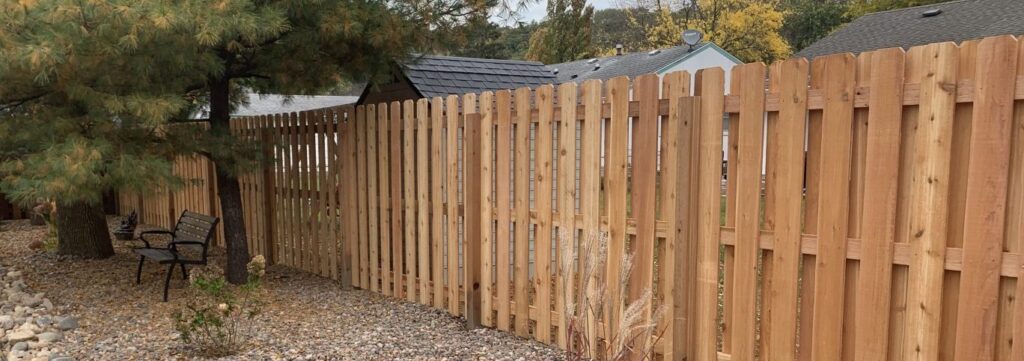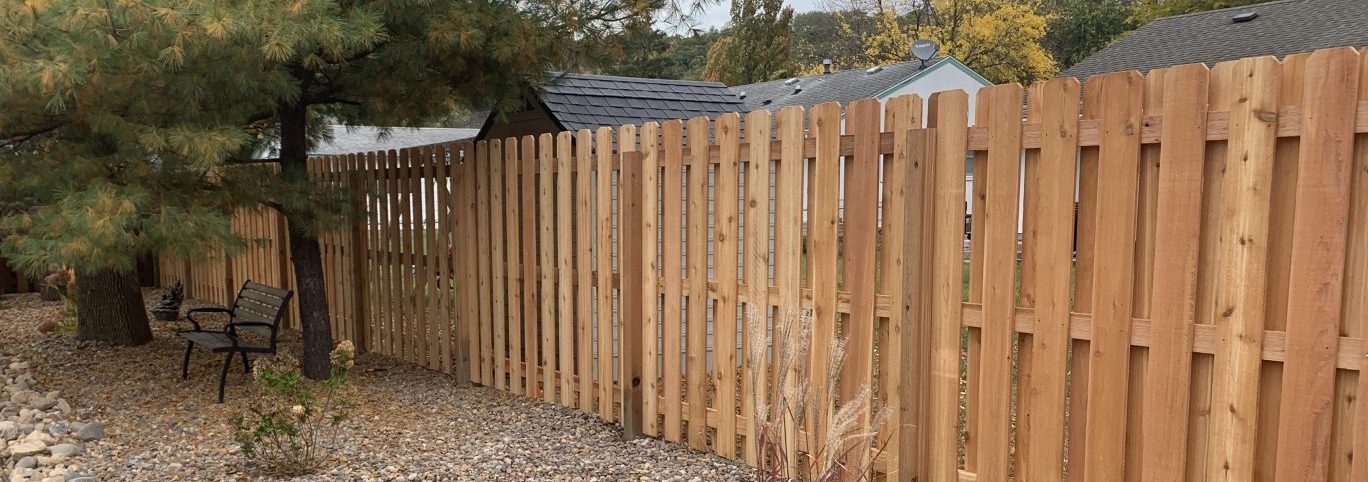
Dog Eared Fence Panels: A Comprehensive Guide
When it comes to choosing the right fencing for your property, aesthetics, durability, and cost-effectiveness are key considerations. Among the myriad options available, dog eared fence panels stand out as a popular and versatile choice. Characterized by their distinctive rounded or clipped corners, these panels offer a blend of classic appeal and practical functionality. This comprehensive guide will delve into everything you need to know about dog eared fence panels, from their benefits and different types to installation tips and maintenance strategies.
What are Dog Eared Fence Panels?
Dog eared fence panels, also sometimes referred to as ’rounded top’ or ‘clipped corner’ panels, are a style of fencing where the top corners of each vertical board are cut at an angle, creating a rounded or ‘dog ear’ appearance. This design element provides a softer, more visually appealing alternative to traditional square-topped fence panels. The panels are typically constructed from wood, most commonly pressure-treated pine or cedar, although composite materials are also available.
The design isn’t just for looks. The clipped corners help to prevent splintering and damage from weathering, extending the lifespan of the fence. This makes dog eared fence panels a practical and aesthetically pleasing choice for homeowners and businesses alike.
Benefits of Choosing Dog Eared Fence Panels
Dog eared fence panels offer a multitude of advantages that make them a compelling option for a variety of fencing needs:
- Aesthetic Appeal: The rounded or clipped corners create a softer, more welcoming look compared to the sharp lines of traditional fences. This makes them ideal for residential properties where curb appeal is important.
- Durability: The design helps to prevent water from pooling on the top edges of the boards, reducing the risk of rot and decay. Pressure-treated wood further enhances the panel’s resistance to weather and pests.
- Cost-Effectiveness: Dog eared fence panels are generally more affordable than more elaborate fencing styles, making them a budget-friendly option without compromising on quality or aesthetics.
- Ease of Installation: These panels are relatively easy to install, especially if you opt for pre-assembled sections. This can save you time and money on professional installation costs.
- Versatility: Dog eared fence panels can be used for a variety of purposes, including boundary fencing, garden enclosures, pet containment, and privacy screens. They can also be easily customized with paint or stain to match your home’s exterior.
Types of Dog Eared Fence Panels
While the basic design remains consistent, dog eared fence panels are available in several variations to suit different aesthetic preferences and functional requirements:
- Standard Dog Eared Panels: These are the most common type, featuring a simple, rounded or clipped corner design.
- Picket Dog Eared Panels: These panels feature individual pickets with dog eared tops, spaced apart to create a more open and decorative look. These are often used for front yard fences where complete privacy is not required.
- Solid Dog Eared Panels: These panels have no gaps between the boards, offering maximum privacy and security. They are ideal for backyards, pool enclosures, and areas where noise reduction is desired.
- Shadowbox Dog Eared Panels: Also known as ‘board-on-board’ fencing, shadowbox panels feature overlapping boards that create a visually interesting texture and allow for airflow.
- Material Variations: Panels are available in various materials, including pressure-treated pine, cedar, redwood, and composite materials. Each material offers different levels of durability, weather resistance, and aesthetic appeal.
Choosing the Right Dog Eared Fence Panels
Selecting the right dog eared fence panels for your property involves considering several factors:
- Material: Pressure-treated pine is a cost-effective option that offers good durability. Cedar and redwood are more expensive but offer superior resistance to rot and insects. Composite materials are a low-maintenance alternative that mimics the look of wood.
- Size: Standard panel heights range from 4 to 8 feet. Choose a height that provides the desired level of privacy and security. Consider local regulations regarding fence height restrictions.
- Style: Select a style that complements your home’s architecture and landscaping. Consider whether you prefer a solid panel for maximum privacy or a picket panel for a more open look.
- Budget: Set a budget and compare prices from different suppliers. Remember to factor in the cost of posts, hardware, and installation.
- Local Climate: Consider your local climate and choose a material that is well-suited to the weather conditions. For example, if you live in an area with high humidity, cedar or composite materials may be a better choice than pine.
Installation Guide for Dog Eared Fence Panels
Installing dog eared fence panels can be a DIY project for experienced homeowners. However, if you’re not comfortable with carpentry or heavy lifting, it’s best to hire a professional installer. Here’s a general overview of the installation process:
- Planning and Preparation: Obtain any necessary permits from your local authorities. Mark the fence line and locate any underground utilities.
- Post Installation: Dig post holes at the desired spacing (typically 6 to 8 feet apart). Set the posts in concrete, ensuring they are plumb and aligned. [See also: How to Install Fence Posts Correctly]
- Rail Installation: Attach horizontal rails to the posts, creating a framework for the panels. Use galvanized screws or nails to ensure a secure connection.
- Panel Installation: Lift the dog eared fence panels into place and attach them to the rails. Use screws or nails to secure the panels. Ensure the panels are level and evenly spaced.
- Finishing Touches: Add any desired trim or decorative elements. Apply a sealant or stain to protect the wood from the elements.
Maintenance and Care of Dog Eared Fence Panels
Proper maintenance is essential to prolong the life of your dog eared fence panels. Here are some tips to keep your fence looking its best:
- Regular Cleaning: Wash the fence regularly with a mild soap and water solution to remove dirt and grime. Use a soft brush or sponge to avoid damaging the wood.
- Inspect for Damage: Regularly inspect the fence for signs of rot, insect damage, or loose hardware. Repair any damage promptly to prevent further deterioration.
- Apply Sealant or Stain: Apply a sealant or stain every few years to protect the wood from the elements. Choose a product that is specifically designed for exterior use.
- Trim Vegetation: Trim any vegetation that is growing near the fence to prevent moisture buildup and rot.
- Replace Damaged Panels: Replace any severely damaged or rotten panels promptly to maintain the structural integrity of the fence.
Cost Considerations for Dog Eared Fence Panels
The cost of dog eared fence panels can vary depending on several factors, including the material, size, and style of the panels, as well as the cost of installation. Here’s a general overview of the cost considerations:
- Panel Cost: The cost of dog eared fence panels typically ranges from $20 to $50 per panel, depending on the material and size. Pressure-treated pine panels are generally the most affordable option, while cedar and composite panels are more expensive.
- Post Cost: The cost of fence posts can range from $10 to $30 per post, depending on the material and size. Pressure-treated pine posts are the most common and affordable option.
- Hardware Cost: The cost of hardware, such as screws, nails, and brackets, can add an additional $50 to $100 to the total cost of the project.
- Installation Cost: If you hire a professional installer, the labor cost can range from $5 to $15 per linear foot. This can significantly increase the overall cost of the project.
To save money on your fencing project, consider installing the fence yourself. However, be sure to factor in the cost of tools and equipment, as well as the time and effort required to complete the project.
Dog Eared Fence Panels: A Sustainable Choice
Choosing dog eared fence panels can also be a sustainable choice, particularly if you opt for materials sourced from responsibly managed forests. Look for wood that is certified by the Forest Stewardship Council (FSC), which ensures that the wood comes from forests that are managed in an environmentally and socially responsible manner.
Additionally, consider using recycled or reclaimed wood for your fence. This can help to reduce waste and conserve natural resources. Composite materials made from recycled plastic are also a sustainable alternative to traditional wood fencing.
Conclusion
Dog eared fence panels offer a compelling combination of aesthetic appeal, durability, and cost-effectiveness. Whether you’re looking to enhance your property’s curb appeal, create a private outdoor space, or simply define your property boundaries, dog eared fence panels are a versatile and practical choice. By carefully considering the factors outlined in this guide, you can select the right panels for your needs and enjoy a beautiful and long-lasting fence for years to come. Consider all your options and enjoy the process of selecting the best fence for your property.

